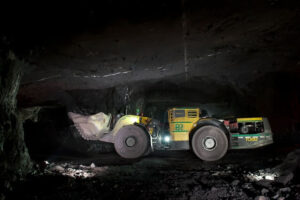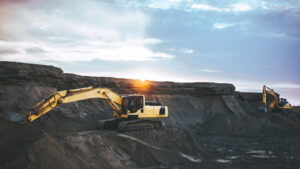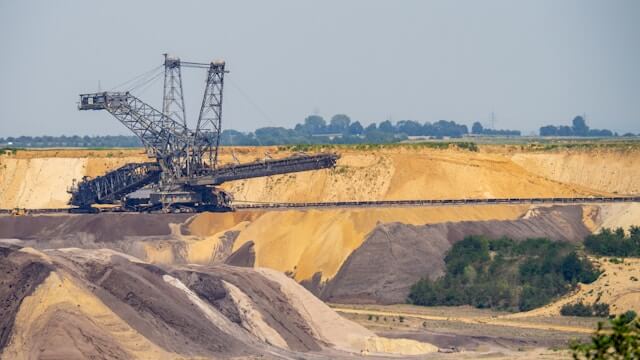The endless quest for resources propels humanity into both the heart and belly of the earth. Mining, a vital economic activity, plays a crucial role in extracting materials like minerals, metals, precious stones, and limestone. This exploration process utilizes various methods, with open-cut and underground mining at the forefront. Understanding these two prevalent extraction techniques is essential to evaluate the effects of open-cut versus underground mining on the environment, cost-effectiveness, safety, and efficiency. This article delves into a detailed comparison of the environmental effects of open-cut and underground mining, analyzing the pros and cons of each method.
What is Open-Cut Mining?
Open-cut mining, also referred to as open-pit mining, is a method that involves stripping away surface layers to access ore deposits. This process begins with clearing vegetation, soil, and top-layer rocks to create a large, deep pit. The goal is to expose minerals near the surface, enabling easier and quicker recovery. While open-cut mining is known for its high recovery rates and cost efficiency, its environmental footprint is substantial and concerning.
Environmental Consequences of Open-Cut Mining
The most immediate environmental consequence of open-cut mining is deforestation. Large tracts of land are cleared to accommodate mining operations, leading to habitat destruction for many plant and animal species. As the land is stripped of its natural cover, ecosystems are disrupted, resulting in a significant loss of biodiversity. Additionally, removing the topsoil destabilizes the land, making it susceptible to soil erosion. This erosion alters landscapes, damages nearby agricultural land, and can disrupt water flow patterns, creating challenges for local ecosystems.
Water pollution is another critical byproduct of open-cut mining. The extraction process generates waste materials and chemicals, such as cyanide and mercury, which can leach into nearby water bodies. These contaminants not only degrade water quality but also pose a threat to aquatic life and downstream communities. Furthermore, open-cut mining significantly contributes to air and noise pollution, as heavy machinery generates dust and noise disturbances.
Underground Mining: A Different Approach
Unlike open-cut mining, underground mining focuses on resource extraction from beneath the earth’s surface. This method requires digging tunnels or shafts to reach the ore, leaving much of the land surface intact. While underground mining generally causes less surface damage, it presents its own set of environmental challenges.
Environmental Impact of Underground Mining

One of the most severe consequences of underground mining is ground subsidence. When underground layers of earth are removed, the ground above can sink or collapse, damaging buildings, roads, and other infrastructure. This phenomenon can lead to long-term structural issues in nearby communities and necessitate costly repairs. Additionally, underground mining generates waste rock after ore extraction. If not properly managed, this waste can pollute both soil and water sources, as contaminants from the waste rock may seep into the ground, degrading nearby ecosystems and potentially harming local wildlife.
Air pollution also remains a concern in underground mining, but in different ways. The confined spaces and machinery generate dust, while harmful gasses such as methane and radon may be released during the extraction process. These emissions not only pose health risks to workers but also contribute to environmental issues like climate change. Another unique challenge posed by underground mining is radiation exposure, particularly with ores like uranium that contain radioactive substances. When disturbed, these materials pose health risks to miners and surrounding communities if not properly managed.
Comparison: Open-Cut vs. Underground Mining

When comparing the environmental effects of open-cut and underground mining, key differences arise. Open-cut mining affects larger land areas due to the removal of topsoil and the creation of vast pits. The visible environmental footprint of open-cut mining includes deforestation, habitat destruction, and increased water pollution from surface runoff. These effects are more immediate and dramatic on the surface landscape.
On the other hand, underground mining’s environmental impact is more subtle but no less significant. While it leaves much of the surface undisturbed, it can lead to ground subsidence, which damages infrastructure and poses long-term risks. The confined nature of underground mining also introduces risks related to air pollution, harmful gas emissions, and radiation exposure.
Mitigating Environmental Effects
Both mining methods can be made more sustainable with improved practices and technologies. For open-cut mining, efforts to reforest mined areas and rehabilitate ecosystems can help mitigate biodiversity loss. Strict regulations on waste disposal and water management can reduce pollution levels. In underground mining, advanced techniques for controlling subsidence and managing waste can minimize its environmental footprint.
Final Thoughts
Neither open-cut nor underground mining emerges as an environmentally benign option, and both carry considerable risks. While open-cut mining is generally cheaper and more efficient for accessing large ore bodies, it results in greater land disruption and surface damage. Underground mining is less visible but poses its own set of challenges, particularly in terms of subsurface integrity and air quality.
